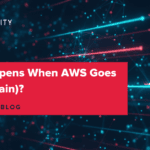5 Signs You’ve Outgrown AWS and Need a Better Cloud Strategy
Cloud infrastructure needs evolve as businesses mature. What works for a startup may not serve a scaling enterprise, and recognizing when your organization has outgrown its current cloud provider is crucial for long-term success. Amazon Web Services (AWS) remains a powerful platform, but it’s not the right fit for every organization at every stage of growth.
Recent industry data reveals a telling trend: surveys suggest 70-83% of enterprises have repatriated at least some workloads off public cloud environments like AWS. This isn’t a step backward—it’s a strategic evolution. As companies scale, their requirements for cost predictability, performance control, and operational flexibility often surpass what traditional hyperscale cloud providers can deliver.
If you’re experiencing growing pains with AWS, you’re not alone. Here are five clear indicators that your organization may have outgrown AWS and needs to reassess its cloud strategy.
1. Your AWS Costs Have Become Uncontrollable and Unpredictable
Perhaps the most immediate sign of outgrowing AWS is when your cloud bills become increasingly difficult to predict and control. What started as manageable monthly expenses can quickly spiral into budget-busting surprises that make financial planning nearly impossible.
The root of this problem lies in AWS’s complex pricing structure. With over 200 services, each with its own pricing model, even experienced teams struggle to forecast costs accurately. Data egress fees—charges for moving data out of AWS—can be particularly shocking. Many organizations discover that accessing their own data costs significantly more than they anticipated, especially as usage scales.
Consider GEICO’s experience: the insurance giant saw its AWS bills increase by 2.5x, prompting a comprehensive reevaluation of its cloud strategy. This dramatic cost escalation isn’t uncommon. According to recent research, 72% of respondents exceeded their cloud budgets in the fiscal year 2023-2024, highlighting how widespread this challenge has become.
The problem extends beyond just high costs—it’s the unpredictability that creates operational headaches. When you can’t accurately forecast your infrastructure expenses, it becomes impossible to make informed business decisions or maintain healthy profit margins. Organizations find themselves constantly reacting to cost spikes rather than proactively managing their infrastructure investments.

2. AWS’s Lack of Cost Transparency Creates FinOps Frustration
Even when organizations dedicate significant resources to understanding their AWS spending, the platform’s opacity makes effective financial operations (FinOps) extremely challenging. A staggering 95% of organizations find AWS billing confusing, creating persistent friction between finance and technology teams.
The complexity goes beyond just understanding individual charges. AWS’s pricing models change frequently, with different rates for different regions, usage tiers, and commitment levels. Reserved instances, spot pricing, and savings plans each come with their own terms and conditions. Even AWS’s own cost management tools often fail to provide the granular visibility needed for effective budget control.
This lack of transparency has real business consequences. When FinOps teams can’t clearly attribute costs to specific projects, departments, or business units, it becomes nearly impossible to make data-driven decisions about resource allocation. The time and expertise required to decode AWS billing often exceeds the value it provides, diverting valuable resources from strategic initiatives.
The U.S. Producer Price Index for cloud services jumped 6.4% between September 2023 and May 2024, yet many organizations couldn’t identify which specific services or usage patterns drove their increased costs. This opacity makes it difficult to optimize spending or negotiate better terms with cloud providers.
3. Vendor Lock-In Limits Your Strategic Flexibility
As organizations mature, they often require greater flexibility in their technology choices and deployment strategies. AWS’s ecosystem, while comprehensive, can create significant vendor lock-in that limits strategic options and increases long-term risk.
The challenge isn’t just technical—it’s strategic. When your applications are tightly integrated with AWS-specific services like Lambda, DynamoDB, or proprietary APIs, migrating to alternative solutions becomes increasingly complex and expensive. This dependency can limit your ability to respond to changing business requirements, compliance mandates, or competitive pressures.
Geographic and regulatory constraints add another layer of complexity. Organizations operating in multiple countries often discover that AWS’s regional availability doesn’t align with their data sovereignty requirements or performance needs. When you need compute resources closer to specific markets or must comply with local data residency laws, AWS’s standardized approach may not provide the flexibility you need.
Multi-cloud strategies have become increasingly popular as a hedge against vendor lock-in. IDC reports that 88% of organizations have adopted hybrid cloud approaches, with 79% using multi-cloud environments. This trend reflects growing recognition that no single cloud provider can optimally serve all use cases or business requirements.
4. Performance and Scale Issues Hold Back Your Applications
While AWS offers impressive scale on paper, many organizations discover that its shared infrastructure model creates performance challenges that become more pronounced as their requirements grow. The “noisy neighbor” effect, where other tenants’ workloads impact your application performance, can be particularly problematic for mission-critical applications.
Service quotas and rate limits, designed to prevent resource abuse, can become bottlenecks for rapidly scaling applications. While these limits can often be increased through support requests, the process introduces delays and uncertainty into capacity planning. Organizations with predictable growth patterns often find this reactive approach frustrating and potentially limiting to business operations.
Latency becomes increasingly important as applications become more distributed and user expectations rise. AWS’s standardized regional architecture may not provide optimal performance for organizations that need to place compute resources in specific geographic locations or closer to their user base.
For applications requiring consistent, predictable performance, AWS’s variable infrastructure can create challenges. When you’re competing on application responsiveness or have strict SLA requirements, the performance variability inherent in shared cloud environments can become a competitive disadvantage.
5. Support Quality Doesn’t Match Your Business Requirements
As organizations grow and their applications become more critical to business operations, they often require higher levels of support than AWS’s tiered model provides effectively. The challenge isn’t just response times—it’s the quality and consistency of support interactions.
AWS’s support structure prioritizes volume over specialization. While this approach works well for common issues, it can be frustrating when dealing with complex architectural challenges or performance optimization. Organizations often find themselves escalating through multiple support tiers before reaching someone with the expertise to address their specific requirements.
The cost of premium support can be substantial, often representing a significant percentage of overall cloud spending. Yet even with expensive support plans, many organizations report inconsistent experiences and difficulty accessing the specialized expertise they need for critical issues.
Compare this with providers like Hivelocity, which offer direct access to experienced engineers 24/7 as a standard feature, not a premium add-on. This approach recognizes that expert support becomes increasingly valuable as infrastructure complexity grows and business requirements become more sophisticated.
Moving Beyond AWS: Your Next Strategic Step
Recognizing these signs isn’t about admitting failure—it’s about acknowledging success. When your organization outgrows AWS, it typically means you’ve scaled beyond the point where a one-size-fits-all cloud solution can optimally serve your needs. This evolution opens opportunities for more strategic, tailored infrastructure approaches.
Modern alternatives like Hivelocity’s Enterprise Cloud provide the performance benefits of dedicated infrastructure with the operational convenience of cloud services. With transparent, predictable pricing and direct access to expert support, these solutions address many of the pain points that indicate AWS may no longer be the right fit.
The path forward involves evaluating your specific requirements for cost predictability, performance consistency, strategic flexibility, and support quality. Organizations that make this transition often discover they can achieve better outcomes at lower total cost while gaining greater control over their infrastructure destiny.
Ready to explore alternatives that align better with your evolved requirements? Learn more about Hivelocity’s Enterprise Cloud and discover how a more strategic approach to cloud infrastructure can support your organization’s continued growth and success.


